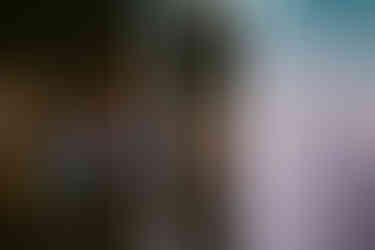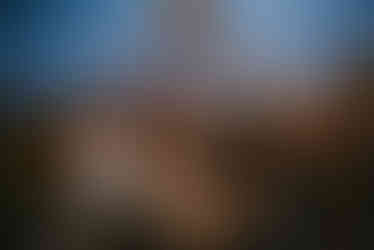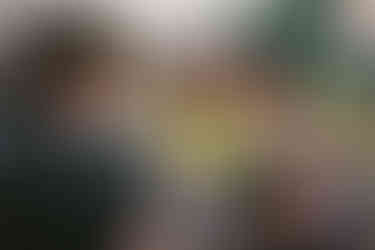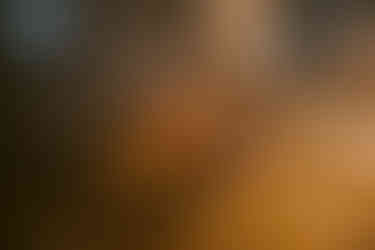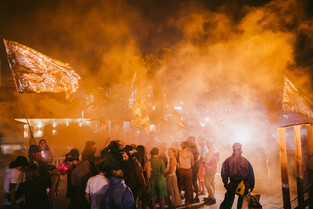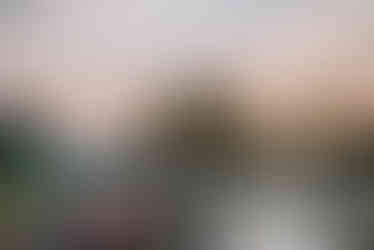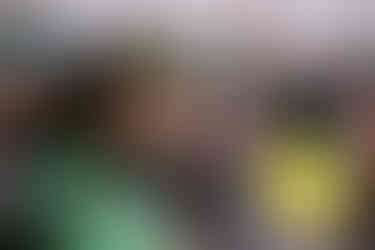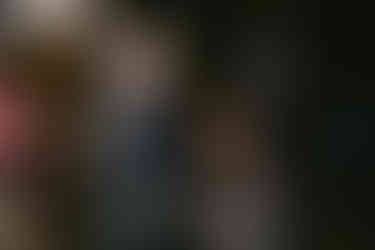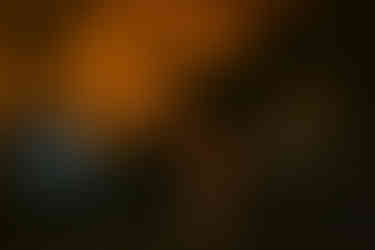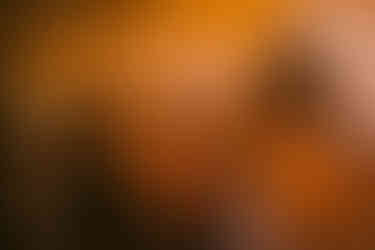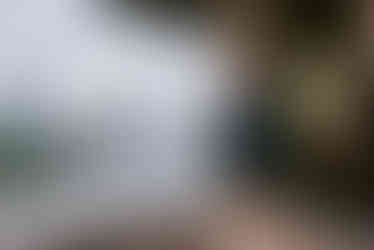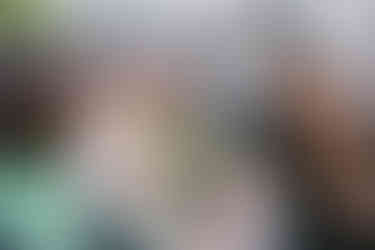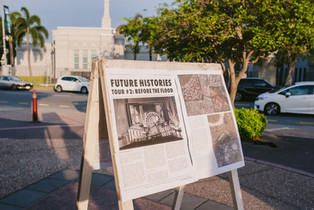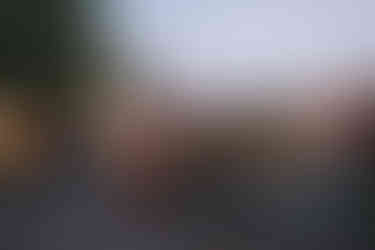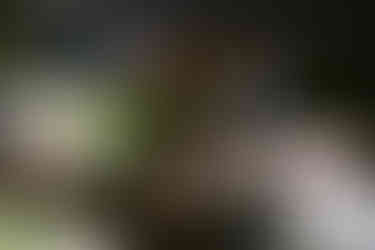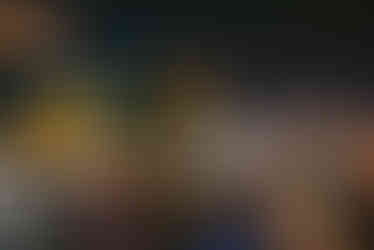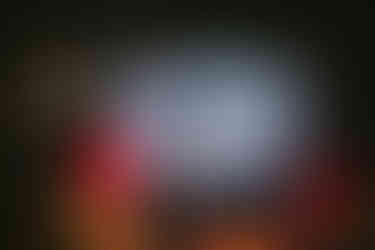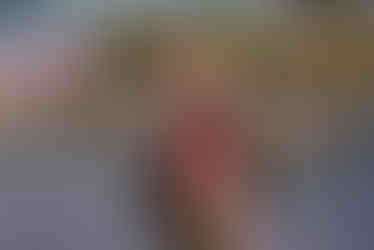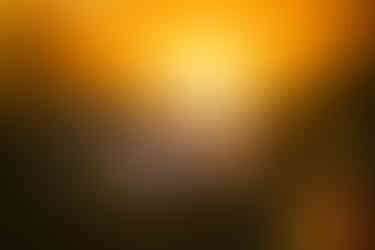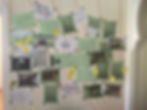Future Histories Project Review: Shane "Sugar" Sugrue
- The Bug
- Apr 15, 2020
- 8 min read

FUTURE HISTORIES
Shane "Sugar" Sugrue
All images by Megan Keene from Future Histories Tour #2
After the collapse of the first iteration of the project, Future Histories was revived as an unsolicited immersive theatre event on a derelict vacant site on Vulture Street. Without the BURN Arts micro-grant, the resurrected project simply would not have happened. As I am still working on the research project of which this was a constituent part, a fuller assessment of the project is yet to follow. For now, this is a brief synopsis of the final event and a short reflection on the context in which it took place.

Inventing ritual or ritualising invention?
Combining set design, audio-visual installation, documentary, and story-telling, Future Histories took an audience of ‘tourists’ on a journey through the future of the Gabba Ward. Unfolding across multiple locations, participants were invited to enter a fictional world in which a cataclysmic event has caused collective loss of cultural memory.
Through the process of designing and building a set, developing a narrative and ultimately enacting it for each other, participants gathered together stories of the locality both real and imagined, drawn from the past and the future. The imagined stories of participants were put into conversation with the remembered stories of local residents – fantasy and reality brought together as part of a new mythology of place.
As a point of departure for the project, I took the floor plans of several houses removed during the recent widening of Lytton Road in East Brisbane, which were relocated to a storage yard in Pinkenba. With a team of collaborators these were documented in-situ at the removalists' yard. Construction materials were gathered from demolished houses there and in kerbside collection, and subsequently reassembled at HSBNE into three-dimensional ‘fragments’ of the Lytton Road houses as a backdrop to the event.
The resulting narrative became the basis for a public walking tour in which a further group of participants was invited to learn about the ‘future history’ of the neighbourhood around the vacant site, collecting ‘memories’ and ‘visions’ en route. At the destination they were interviewed about their experiences and asked to share their own visions for the New World City.
Key collaborators were assigned fictional characters within the narrative. each corresponding to a key 'real-world' role in delivering the event. These were conceived as the constituent parts of the multifaceted role of the architect, a direct attempt at devolving creative agency through the narrative format of the event. The design and construction was documented through film, photography, drawing, and writing. It unfolded in two key events:
• Future History Tours #1: In search of the New World City – Atlas Homes, Pinkenba, 26th Oct - Gathering ‘fragments’ – physical materials, video footage, photographs, audio and text
- Collectively sketching a narrative / ritual structure to be developed in the second event
• Future History Tours #2: Before the Flood – Vulture Street 24th Nov
- A walking tour from Kangaroo Point to a ‘secret location’ - the derelict site on Vulture Street
- A screening (live video & audio mixing) of assembled materials, ‘community consultation’, and improvised enactment of the narrative - a 'messenger' coming to save our precious cultural memories from obliteration at the hands of digitisation.

To the death of a clown
Future Histories started life as a site design project for Backbone Festival, an annual event held by Backbone – long-time friends and supporters of Modifyre and BURN Arts – at their home in East Brisbane Bowls Club (EBBC). It was conceived as a ‘design test’, in the context of an ongoing programme of practice-led research in architecture and urban design that I am currently undertaking in the UK.
Disclaimer for anyone who was involved with Future Histories reading this: if you are hoping to find an answer to the question of what the heck it was all about, you will be sorely disappointed. After three months of writing furiously about it, I am still trying to figure it out. Now I’m onto drawing and modelling in the hopes that will yield some answers to the mystery. Rest assured, as soon as I find anything of merit in the junkpile, you will be the first to know. Artistic failure is okay too though, right..?
The brief from Backbone was to provide an outdoor setting for the theatrical events being produced by their artists at the EBBC site. This included staging, lighting, shade, seating, and a bit of a food truck / bar area for people to congregate between shows. To this I added the aspiration to incorporate stories of the area around the site – to put the memories of local residents in conversation with the visions of these young, emerging artists – and to do so specifically through the medium of design.
I set out to apply a particular approach to design that some architectural theorists refer to as ‘transformative participation’, that is, participation that transforms the expectations and futures of participants. Although it can be very difficult to articulate exactly what this means in practical terms, many in the burner community will already be deeply familiar with the idea of ‘transformative participation’. Indeed, it was precisely the approach to design and construction of major artworks at Modifyre (namely: “she’ll be right”) that I took as a template for the implementation of Future Histories. After five years of building the Bug and the Temple, we know that people will throw everything they have at these artworks that have come to represent their community. However, I was trying to test out how effective this participatory approach could be in the context of a ‘real world’ project with a client, a brief, and a budget coming from outside the fantastically community-spirited confines of the burn.
Using a case study of the Temple at Modifyre 2019, I had previously identified some of the key characteristics of transformative participation, at least as it occurs on a build at Modifyre. I came to the conclusion that the driving force behind these projects is immediacy – that oft-overlooked and much misunderstood little idea relegated to the bottom of the principle pile like the weird kid nobody wants on their team. I take immediacy to mean unmediated social transaction. When you take the medium that ordinarily lubricates and facilitates transaction out of the picture – ie. money – people are compelled into direct, unencumbered interaction in order to achieve their aims. In the case of the designer, this means dreaming up an evocative sketch and a darn good story to get people excited about a project and thus committing the time and energy to make it happen. In other words, while they may pose a perennial threat to its existence, limited resources are precisely what makes events like Modifyre both functional and meaningful. Because we have to ask for help from the people around us to make the magic happen, we inadvertently build a community through building art (rather than, say, consuming the same products or following the same football team). This simple realisation seems important.
Extending the lobby
With this project I set out to speculate on how the mechanisms of immediacy might be fostered in an urban context. I considered in particular the question of how the transformative experience of immediacy might begin to spill beyond the frame of the event into the everyday ‘default’ world of participants, and thus become directly relevant to questions of political participation and spatial agency in the context of urban development. In so doing, I also sought to reflect on how cultural producers might become less vulnerable to co-optation by the processes of neoliberal financialisation, and perhaps begin to plant the seeds of their own counter-cultural values into the soil of a system they set out to critique.
Of course, the participatory approach is also inherently unstable. Beyond the initial excitement of the concept, immediate interaction implies dissolving the boundary between self and other, bleeding one’s own ‘selfish’ interests (let’s say, in realising the vision of an artwork) into those of the group, in order to create a sense of collective ownership, to the point where no one can claim individual authorship over the process – this is what is meant by ‘community artwork’ as far as I can tell. The role of ‘design’ in this sense is not to direct people’s actions towards some pre-determined outcome, but to gently steer from the back, empowering people to exercise their own creative agency and facilitating self-expression, even if that means sacrificing the achievement of some particular technical or aesthetic result. It might even result in total failure – uncertainty of outcome is both the risk and the payoff of participation.
As appealing as all this might sound to the creative-autonomy-inclined amongst us, (I include myself in this category), this degree of uncertainty can be incompatible with ordinary expectations of design as a specific product-oriented process. Architecture is an exercise in risk reduction. As any effigy designer will know, when you are trying to de-centralise creative decision-making, it becomes very difficult to provide a precise indication of what the end product is going to look like, how much it is going to cost, and exactly when it is likely to be finished. Of course these doubts can be mitigated by experience and trust – for five years at Modifyre we have had a Bug to burn, for example, despite the most valiant efforts of crews not to finish in time. (The legend comes to mind of the first Afrikaburn, the effigy still under construction while the crowd gathered on burn night, chanting for fire..!). In the context of the ‘default’ world, though, this blind trust doesn’t necessarily play out the same way. In the case of Future Histories, I was unable to provide sufficient assurance to the event producers that the infrastructure they required for their festival would be built on time and under budget, and so the envisaged project was scrapped before we put hammer to nail – future history indeed!
Breaking the Boundary
The key lesson here was that immediacy is fine so long as it is safely contained within the established frame of an event or entity – if an artwork is billed as participatory, experimental, challenging, political even (heaven forbid!), provision can be made for its inclusion in a programme of carefully curated, disclaimed content. However, once immediacy begins to spill beyond this established frame into the delivery of essential infrastructure it becomes a threat to the very substance of the frame itself. It goes from content to form, and that is unacceptable. If culture is the content, then administration is the form. At the interface between the two are the producers and curators who have the unenviable task of protecting artists from the stifling effects of bureaucracy, and bureaucrats from the existential crisis that is art.
This is precisely what organisations like Backbone do – they act as intermediaries between entities utterly foreign to one another that nonetheless need each other to survive. But what happens when an organisation actively supports the most challenging ideas, the ones that might result in the frame itself being dissolved, or perhaps set on fire? What happens when you remove administration altogether and let culture speak for itself? Or at the very least, give people a taste of that as a possibility – widen the aperture so much it becomes temporarily imperceptible to those who are framed within it? These are the questions that BURN Arts exists to ask, I think.

Project collaborators
I am incredibly grateful to the team of gifted folks who helped to pull this particular rabbit out of the hat. Forceps were required and the rabbit now lives in exile.
• Aleea Monsour – participant engagement
• Amanda 'Aqua Mama' Haworth – narrative development
• Joseph 'Dinosaur Puppet' Burgess – audio-visual coordinator
• Thomas 'Lens' Oliver – documentation
• Leonor ‘The Rock’ Gausachs – design coordinator
• Tom ‘Bundy’ Hamlyn – construction coordinator
For various contributions to the success of the project, particular thanks also go to:
• Megan Keene
• Evey Skinner
• Michelle Kipnis
• Marisa Georgiou
• Saara Roppola
• Andy Price
• Stirling Blacket & Sophie Speer
• Karl Richardson & Beau Sandford
• Jacob Viel & Bridget Weir
• And Alfie.
If folks want to know a little more about the research they can check it out here (in need of a bit of updating, but has some pretty pictures): http://cambridge-design-research-studio.com/projects/speculating-on-the-new-worldcity/
An account of my other fieldwork activities, including the Temple build at Modifyre 2019, can be found here: https://www.unqualified-design.com/maud NOTE: the posts dry up around the time the original Future Histories project fell apart...

